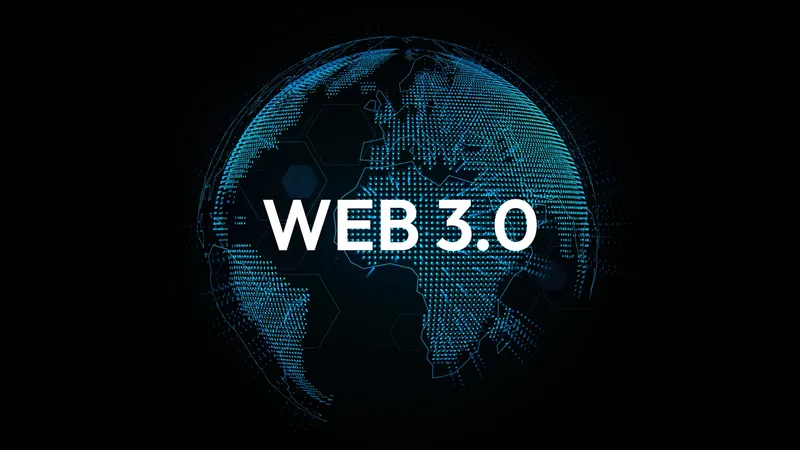Why exploring Web3 development opportunities is the next big thing
The Web3 sector might be going through a bear market, but the technological advancements in this space have not yet slowed down.
Web3 development’s importance has only grown since its humble beginnings in 2009. Web3 has rapidly expanded to numerous sectors, including Decentralized Finance (DeFi), Non-Fungible Tokens (NFTs), Metaverse, etc., leading to significant innovations.
Although most acknowledge that Bitcoin began this shift towards a blockchain-based web, the use cases for this technology have evolved greatly since its inception. Some examples include using a secure voting system, authenticating products selling decentralized cloud storage, and hosting decentralized websites.
Despite the promise of much innovation, the Web3 industry still struggles with streamlined platforms, learning resources for developers, and holistic platforms dedicated to upskilling people in Web3.
The Web3 sector might be going through a bear market, but the technological advancements in this space have not yet slowed down. In the first quarter of 2022, the sector saw nearly $14.6 billion in investments to further innovations with blockchain technology at the helm. These are:

Disruption in traditional sectors
Web3 technology has made its mark in the traditional systems, with numerous tech giants, corporates, and even government bodies leveraging or exploring ways to leverage the decentralized technology.
According to a 2021 Blockdata report, as of September 2021, 81 of the top 100 public companies, including Microsoft, Amazon, Samsung, Alphabet, etc., use blockchain technology. NFTs, besides their diversified and unique nature, have become hit in the entertainment, gaming, and music industries.
Hiring in the sector
Web3 has been wrongly presumed to be a tech-focussed or a tech-centric space where only engineers and the likes can be hired. However, in reality, the sector offers a wide range of job roles that cater to several industries, including designing, architecture, public relations, marketing, sales, social media management, etc.
Given the nascent stage of Web3, the overall sentiment of the space is welcoming to freshers and experienced folks alike, irrespective of their qualifications.
In 2021, Web3 has experienced a rather significant hiring boom. LinkedIn reported a 395% increase in job postings with Web3-related terms. Similarly, Cryptotech Industry in India report, compiled by and , found that nearly 50,000 Indians were employed in crypto tech firms in 2021.

Free educational sources and opportunities
Individuals can find numerous free or reasonably-priced resources online to learn more about the Web3 world. Moreover, Web3 firms frequently conduct online workshops and mentorship sessions to help developers learn relevant languages and coding to help them build out their own solutions.
Major Web3 firms have always been supportive of open-source learning. They have launched many accelerators, community grants programmes, launchpads, etc., dedicated to fostering Web3 innovation and educating developers to enter this space.
Rapid augmentation of emerging technologies and innovations
These factors are key catalysts in the rapid augmentation of the Web3 space. The sector’s accelerated growth has provided opportunities for startups, innovators, capitalists, investors, visionaries, etc., to experiment and explore new technology.
Experimenting with DLT technology has since expanded to fully functional industries, including the latest trend, Web3, and the metaverse.
Moreover, Web3 innovations have encouraged the amalgamation of different emerging technologies to present highly efficient solutions for the future world.
The road ahead
Web3 boomed in 2021 when the crypto market capitalisation hit a record $3 trillion mark, and venture capital firms invested over $30 billion in crypto startups.
With these developments, there’s an unmistakable demand for Web3—only set to increase exponentially over the next few years as more consumers, businesses, and industries embrace the inevitable transition from Web2 to Web3.
Nonetheless, the industry suffers from various shortcomings, including a developer crunch, chaotic yet niche platforms, scattered opportunities, chain-specific languages, etc.
Leveraging most of these global opportunities becomes a tedious task, and the adoption of a more coordinated and cohesive approach would be prudent.
Recently, the metaverse has gained traction among Web3 and tech enthusiasts. With the advancements witnessed in Web3, visionaries have found another technology to explore. There have been multiple collaborations between Web3 and the metaverse that seem to be the next step in solving the pertinent problems of the Web3 world.
Companies are building metaverse for developers, where developers can enter and explore freely while having access to various global Web3 opportunities without having to import, repeat, or organise their data according to the platform’s layout.
They can find opportunities to learn, earn, work, and upskill themselves in the metaverse. Further, NFTs have also found their right fit in the metaverse, where creators can display or trade their work in a digital world on the spot. With decentralized finance, one can work towards forming a full-fledged digital economy, maintained in the metaverse.
The Web2 world has also started testing the metaverse waters—a bullish sign towards the future of this technology. The amalgamation of Web3 and metaverse can be the right step in ensuring a Web3 innovation-filled world.
Edited by Suman Singh
(Disclaimer: The views and opinions expressed in this article are those of the author and do not necessarily reflect the views of YourStory.)










